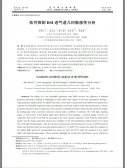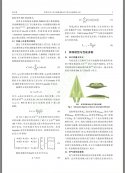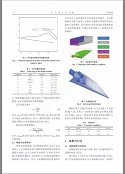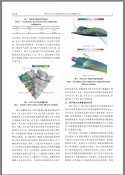Not relevant, but it probably comes down to a lot of Lockheed Martin collaboration.Why are Koreans able to catch up so fast with their KF-21 stealth plane?
You are using an out of date browser. It may not display this or other websites correctly.
You should upgrade or use an alternative browser.
You should upgrade or use an alternative browser.
PLA next/6th generation fighter thread
- Thread starter Blitzo
- Start date
- Status
- Not open for further replies.
Here's a list of certain Chinese fighter jets with the year of their first flight.
Generational descriptions are, of course, quite subjective.
J6 - 1958 (1.5 gen?)
6 years pass before
J7 - 1966 (2nd gen, license built)
J8 - 1969 (early variant)
7-10 years pass before
J7A - 1976 (2nd gen, domestic)
8 years pass before
J8B - 1984 (2.5nd gen?, reworked variant)
JH7 - 1988 (3rd gen strike plane)
10-14 years pass before
J10 - 1998 (4th gen)
13 years pass before
J20 - 2011 (5th gen)
at least 13-14 years pass before
JXX - (6th gen?)
So... right now we're basically at a point where the time elapsed between two different generation of jets is the longest it has ever been.
And since the rumor mill is fairly still on next gen fighter jets, it's plausible there'll be at least a few more years until we see any such jet.
J-35/31 certainly don't count as next gen jets as they're basically the same gen as the J-20. Same reason why J-11 family wasn't mentioned at all, as it doesn't represent a new generation of jets build domestically for China.
Of course, the reasons for this gap are fairly known and logical. No one has 6th gen yet. Before, China was always catching up. Now it's near the forefront. Now it's harder and it takes time to make large leaps.
And, who knows, maybe we'll see some sort of 5.5 gen plane in the late 2020s, before we see a true next gen design. Who even knows what a next gen is?
Even if it takes a 25 year gap, and if China's 6th gen flies in 2035, that might still be less than the gap observed in the USAF. 1997 for F-22's first flight (YF prototype not being relevant) and probably not earlier than late 2020s for 6th gen. That's gonna be 30+ years.
A hot take is I've played around with, is that F-35 Block 4 and J-20A will be seen in retrospect as examples of "5.5th gen" aircraft.
As for "6th gen", everyone is being cautious and doing thorough experiments and trials to determine what their next generation of aircraft looks like.
I don't think that's particularly controversial.
What should be more interesting is what is the gap between the US and PRC "6th gen" fighters versus the gap in preceding 5th gen and 4th gen fighters...
They have a highly advanced electronics industry. So they can make the sensors and other avionics. It isn't their first aircraft design (they did the T-50 trainer earlier). The engines are imported.Why are Koreans able to catch up so fast with their KF-21 stealth plane?
antiterror13
Brigadier
Here's a list of certain Chinese fighter jets with the year of their first flight.
Generational descriptions are, of course, quite subjective.
J6 - 1958 (1.5 gen?)
6 years pass before
J7 - 1966 (2nd gen, license built)
J8 - 1969 (early variant)
7-10 years pass before
J7A - 1976 (2nd gen, domestic)
8 years pass before
J8B - 1984 (2.5nd gen?, reworked variant)
JH7 - 1988 (3rd gen strike plane)
10-14 years pass before
J10 - 1998 (4th gen)
13 years pass before
J20 - 2011 (5th gen)
at least 13-14 years pass before
JXX - (6th gen?)
So... right now we're basically at a point where the time elapsed between two different generation of jets is the longest it has ever been.
And since the rumor mill is fairly still on next gen fighter jets, it's plausible there'll be at least a few more years until we see any such jet.
J-35/31 certainly don't count as next gen jets as they're basically the same gen as the J-20. Same reason why J-11 family wasn't mentioned at all, as it doesn't represent a new generation of jets build domestically for China.
Of course, the reasons for this gap are fairly known and logical. No one has 6th gen yet. Before, China was always catching up. Now it's near the forefront. Now it's harder and it takes time to make large leaps.
And, who knows, maybe we'll see some sort of 5.5 gen plane in the late 2020s, before we see a true next gen design. Who even knows what a next gen is?
Even if it takes a 25 year gap, and if China's 6th gen flies in 2035, that might still be less than the gap observed in the USAF. 1997 for F-22's first flight (YF prototype not being relevant) and probably not earlier than late 2020s for 6th gen. That's gonna be 30+ years.
How about J-11B and J-16 ?
Controversial take incoming.A hot take is I've played around with, is that F-35 Block 4 and J-20A will be seen in retrospect as examples of "5.5th gen" aircraft.
As for "6th gen", everyone is being cautious and doing thorough experiments and trials to determine what their next generation of aircraft looks like.
I don't think that's particularly controversial.
What should be more interesting is what is the gap between the US and PRC "6th gen" fighters versus the gap in preceding 5th gen and 4th gen fighters...
It just seems like we've reached a point where the gains made by development of technology is slowing down. The gap between a clean sheet design and existing 5th gens aren't big enough hence development period gets longer and longer. In stark contrast to ealier generations where every few years there would be a huge increase in capability.
There's also the question of whether the pilot is even required with the rapidly closing capability of UAVs, which promise lower cost and better performance.
Like why build a super long range fighter when you can just lob tactical ballistic missiles, surely at some point the cost to manufacture a high stealth long legged fighter is more expensive than just building more BMs. Ballistic missiles don't need a pilot, an airfield or aerial refueling. If the goal is just to hit something far away that is heavily defended, having more/better missiles seems like a easier option.
There's also the question of whether the pilot is even required with the rapidly closing capability of UAVs, which promise lower cost and better performance.
Yes, mainly as control and decision nodes. Even highly complex and advanced UCAVs (e.g. CCAs) are unable to do everything on their own, especially taking into account their smaller sizes and the less advanced computing systems onboard than larger, manned fighters in order to reduce unit costs for larger available numbers.
Like why build a super long range fighter when you can just lob tactical ballistic missiles, surely at some point the cost to manufacture a high stealth long legged fighter is more expensive than just building more BMs. Ballistic missiles don't need a pilot, an airfield or aerial refueling. If the goal is just to hit something far away that is heavily defended, having more/better missiles seems like a easier option.
Not every target requires ground-launched ballistic missiles. Once most if not all of the key/critical enemy targets and theater/strategic AD systems are taken out, costs no longer justifies spamming more ballistic missiles to strike enemy targets that can be supressed if not destroyed by other cheaper and more effective means.
For instance, I certainly wouldn't want to use DF-16 to strike a HIMARS TEL somewhere in the Ryukyus, when a WL-3 or CH-5 armed with A2G missiles can do the job with better response time and lower cost - Provided the THAAD and PAC-3 systems in the region have been effectively surpressed/rendered ineffetive in threatening PLA's airborne units.
Besides, the costs of ballistic missiles actually goes up quite rapidly as strike ranges extends further, even with economics of scale being considered.
Also, I honestly don't think that the PLAAF would be using Sino-NGAD or J-20A/S to conduct ground/surface-attack missions. Providing target guidance for the missiles launched from the JH-7s, J-16s and/or H-6s (and hopefully H-20s soon, if not also missile/bomb-truck UCAVs e.g. GJ-11s) would be a better case of use for them.
Last edited:
Where do you get the bottom photo? Impressive if real.
It's PS. I saw it on WB.Where do you get the bottom photo? Impressive if real.
- Status
- Not open for further replies.





